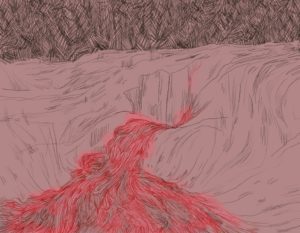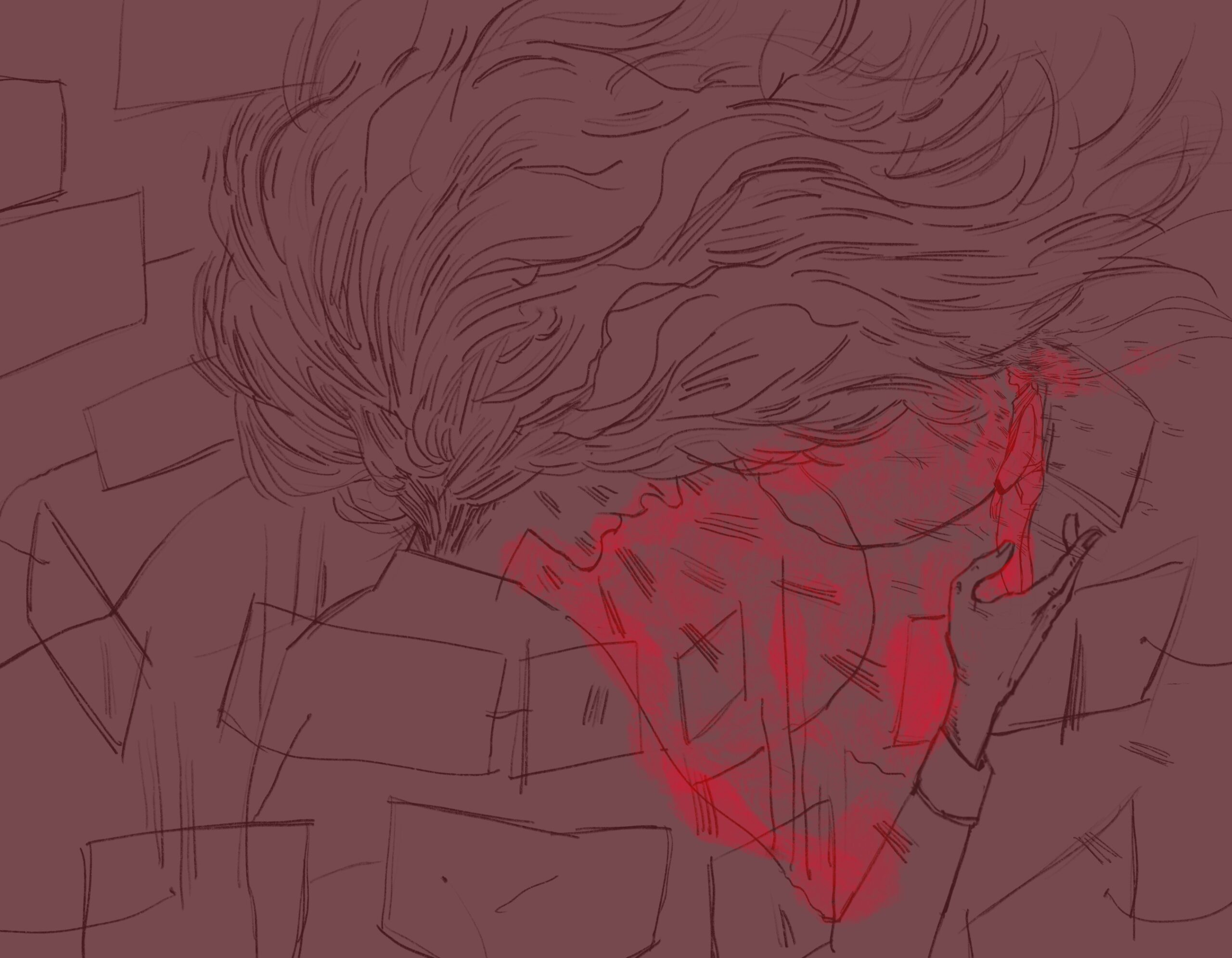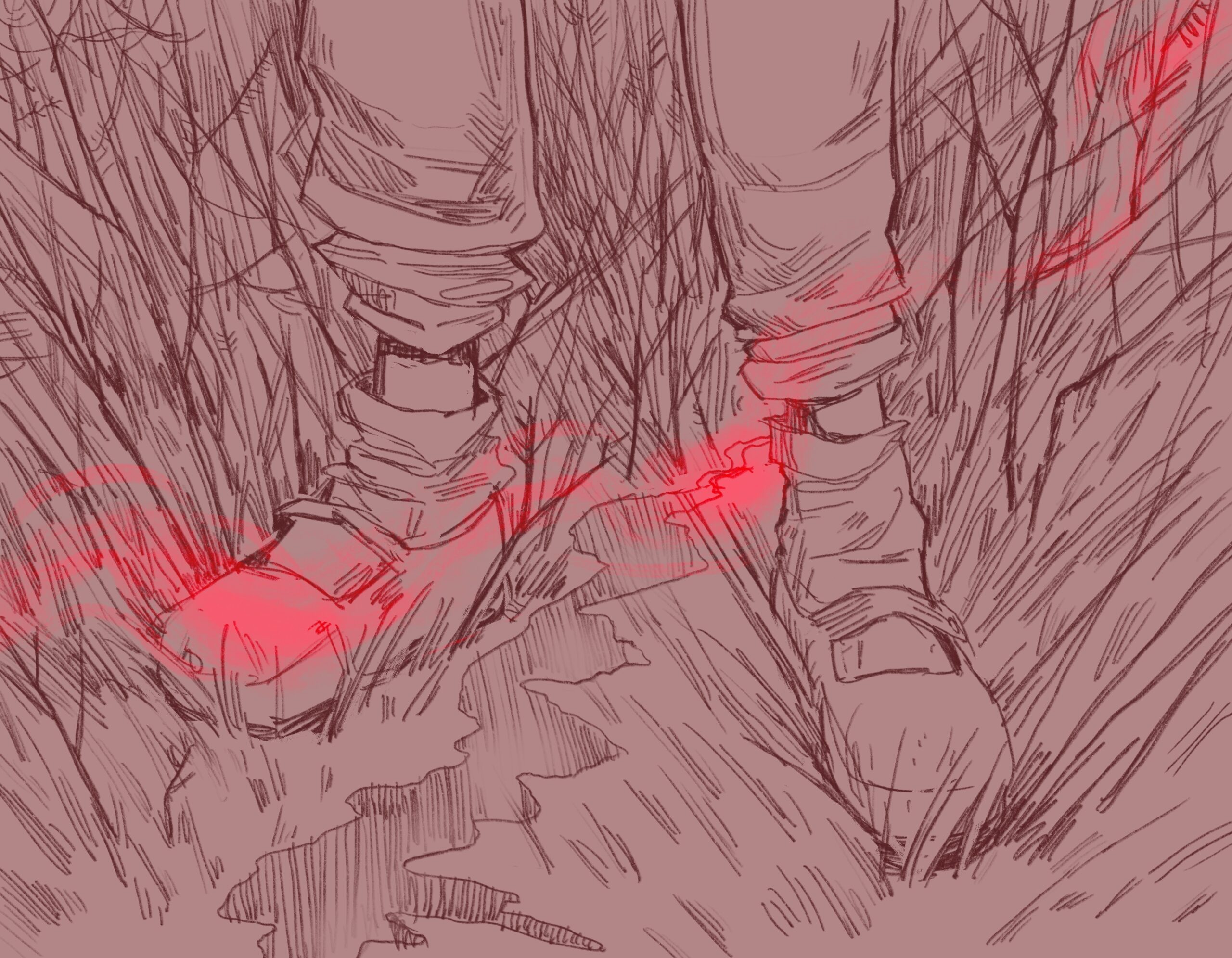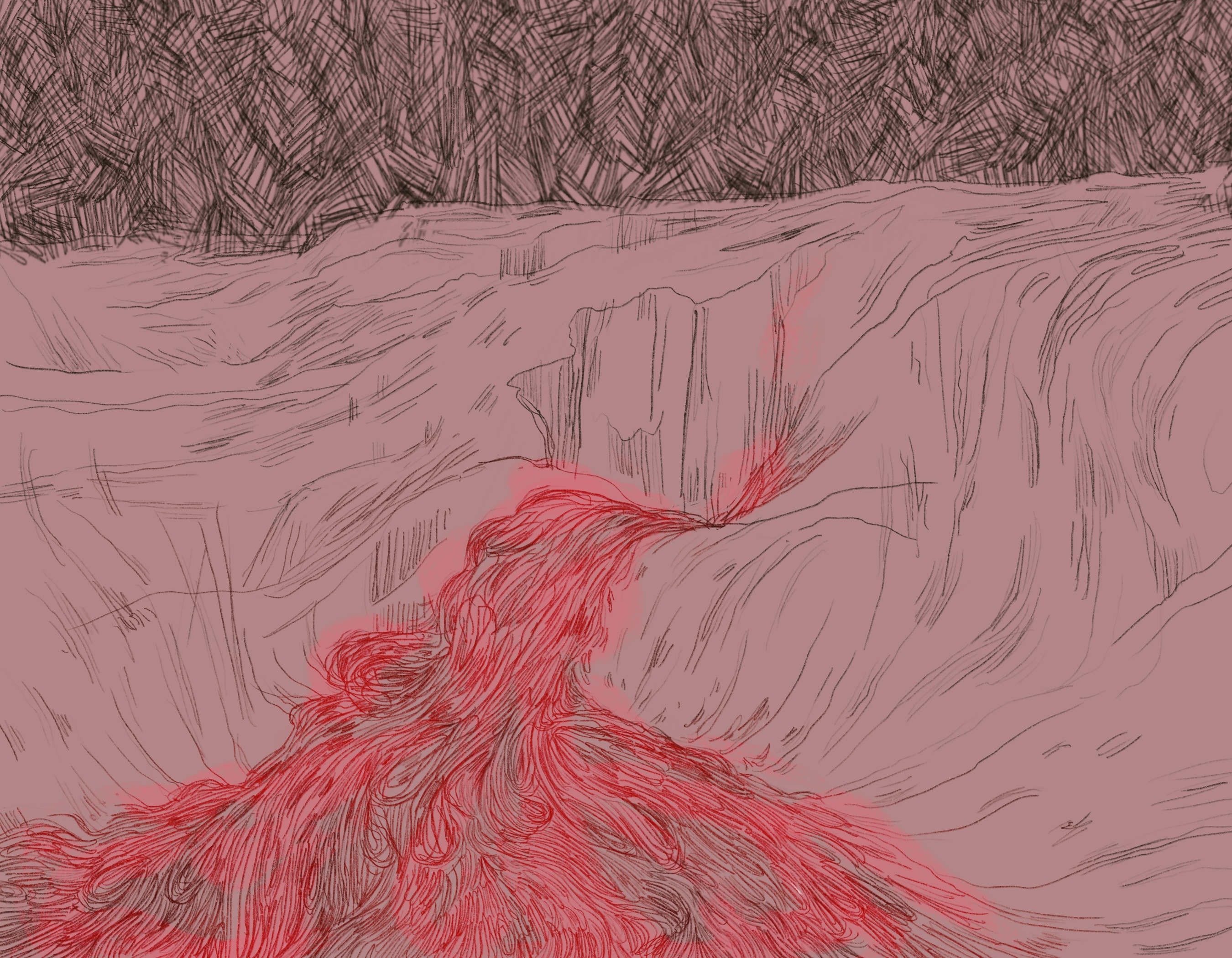
There is a place in Antarctica where the ice melts red, a wound on Taylor Glacier begging for a tourniquet. Scientists first attributed the strange coloring to a high presence of red algae in the water, though it was later discovered to be due to iron oxides. The river has flowed slowly into the pitch blue of the ocean for millions of years, a sort of earthly hemophilia. Its name is Blood Falls.
Taylor Glacier isn’t frozen to bedrock, leaving water imprisoned below it; what flows from Blood Falls is infused with three times more salt than the current concentration of the ocean, just as it was five million years ago. The red sits along the surface of the water before old and new mix, like a relic, or a ghost, or a scar, eventually swept out to sea or spit from a whale’s blowhole.
When I was thirteen, I sat in a movie theater with a redheaded boy named Eddie. We made out and shared chocolate candy. Halfway through the movie, he put his arm around me. Instead of putting a hand on my shoulder, he held a knife to my neck. He asked, “are you scared?” I couldn’t turn to face him or the whole theater would’ve flooded red. He asked, “do you trust me?” and I stayed still. My conscious body was unmoving, but my animal body continued to pump blood, release epinephrine, breathe. These were the things I couldn’t control.
He left the blade there, stinging and cold. I tried not to swallow, my mouth filling with sweet saliva, some of it his. I took shallow breaths and hoped I wouldn’t sneeze or yawn. I wished my body would cease being a body, even if just for a moment. When the movie ended, he took the knife away. It hadn’t left a mark, but I could still feel the pressure of it like something sitting on my throat.
A week later, he asked me to video chat. I was curious, thought maybe he’d apologize. Instead, he didn’t even say “hello” before looking to the ceiling and dragging a razor from just below his chin to the meeting of his collarbones. The cut wasn’t deep. Blood trickled from the wound in droplets and spread through the fabric of his blue shirt. He was miles away, pixelated and bleeding on my screen. I felt moored to where I was sitting, unable to do anything past hold my own neck and think of how easy it would’ve been for him to do that to me.
Sometimes, when I close my eyes ten years later, I still see the way he looked that night, all split and open. Mostly, I see his fire-red hair against his freckled skin. I think of the time I watched him have his head shaved, hair pooling on the ground beneath the barber’s chair. I think of Blood Falls: his pale skin a glacier, the iron in his blood identical to the iron in its red water. I wonder if Taylor Glacier wishes it could stop its forward momentum the way I wanted that day at the movies, wonder if it’s trying to stand still but the red just keeps pushing forward, and if the hair on Eddie’s head wanted to hold on but still found itself in a sort of puddle on the floor.
In the car, a friend’s mom told me scientists found a way to record the earth’s sound and that the earth was crying. She said the sound is similar to how whales vocalize, melodic and haunting. I thought: if the world is crying, I know where the sound is coming from. Then she said, “Did you know there is a whale in the world that sings at a frequency no other whale can hear? The whale could be screaming right next to another and it wouldn’t have a clue.” It was snowing in Chicago and we were driving along the lake, and I pictured the whale down there in the dark, asking for help or saying it was hungry or begging in a voice so high only it knew it existed. The whale is nicknamed “the loneliest whale in the world.”
I learned years later the sound she was talking about is a mix of the wailing of the Northern Lights and humming that’s theorized to come from the ocean’s undulation, not from a whale at all. I wonder if each ocean has its own language, whether one ocean’s humming is different from the others. Even if the oceans understand one another, the noises are expelled from earth and then unable to penetrate the atmosphere again. Always present and never heard, like the pain I feel but don’t know how to share.
In the seventh grade, my friend Jenny stepped on a Tic-Tac case, took a sharp piece of plastic, tried to cut herself, and failed. She was used to razors: new, sharp in a way where they glided over skin like scissors through wrapping paper, but we were in the woods on the border of Indiana and Michigan with no cell phone service, much less razors. She wasn’t accustomed to having to use pressure, and I think she was scared. More than scared, she was desperate, and I understood that desperation. “Please help me,” she said, more of a demand than a question. “Please.” She was my best friend, had doe eyes and gapped teeth, and wouldn’t take no for an answer. I had no way for me to leave or say anything other than yes to her relentless pleading.
Sliding down her pants, she stuck out her hip and I pressed the piece of Tic-Tac case into her skin and pulled to the side. I felt sick. Grateful it was over. Wracked with guilt. But she looked at me and said “a little harder this time” and I thought I already agreed, how can I back out now? I did it again with more force. She winced, asked me to keep going. She stuck out her wrist and I cut seven straight lines into her golden skin. Every time I tried to put an end to it she said, “please, just one more.”
I cried, unable to stop my heart from pumping and breath from speeding up and unable to stop from hurting her body. I tried to distract myself by thinking of the way my dad and I gardened together—plucking weeds from the ground, cutting the dead from the thriving, tearing bursting fruits from their vines—how we opened the soil in an effort to make it more beautiful. I wanted to believe that opening Jenny was doing the same. I tried to convince myself that sometimes things, or people, need to hurt before they can grow.
After, her wrist was swollen and angry but she was grateful. I walked to the bathroom and washed the remnants of her blood on my hands down the drain alongside hot water and Dial soap, washing away my guilt and her pleading and the scars that would show up in two weeks’ time.
When we garden together, for once, my father isn’t the one aching. His body has failed him in so many ways, his list of diagnoses ever-expanding. Gardening is our way of forgetting. For a moment, his diverticulitis and colitis and the ghosts of the past injuries to his back, wrist, knee, and feet are lesser pains. We don’t worry about the growing polyps in his colon; we worry whether hydrangeas and peonies will sprout come spring. About frost coming too soon, the possibility of flooding, and whether there’s enough sunlight in Chicago to give the plants what they need. When he doesn’t hurt, I forget about my hurt, too. When we plant the bulbs, I know I have just caused a wound, and while the earth doesn’t bleed, the soil crumbles beneath my fingertips in a way that is almost as good.
When I was sixteen and he hadn’t eaten for three days, drinking nothing but the saltwater dripping from the yellow blisters that lined his tongue and throat, I slipped outside and dug my fingernails into the dirt. I did my best to open the world instead of myself, tried to see blood in the soil. I told myself over and over that he was hurting; that it would be selfish for me to hurt, too. His pain was real and visible. Mine only showed when I forced it to.
When he was hospitalized, the doctors informed me his colon had burst open in three places, opening floodgates into his abdomen. I considered how differently the hurt of Eddie’s neck felt in comparison to my dad’s, whether Jenny’s hip stung in a way that made her feel alive like the cuts I give myself do, whether pain is just pain is just pain. I went outside and dug and dug and wondered if Blood Falls is truly just one place in Antarctica, if it doesn’t live inside all of us, if there is really any difference between saltwater and dirt and blood.
The urge to make my pain visible, to prove it’s real, has never fully dissipated. Sometimes, I’ll smoke and know my sadness will materialize one day in the form of blackened lungs created cigarette by slow-burning cigarette. Sometimes, I’ll think about blood and do nothing. Sometimes, I’ll go outside and dig in the ground until the underneath of my fingernails are black. Sometimes, I’ll do cocaine on a sunny February day and feel pain bubbling hot and explosive inside me. I’ll sit on my floor with an Exacto blade and my leg naked and ready before I think of the years that have gone by since I hurt myself, causing me to put the cap back on and order pizza instead.
I’ll leave the iron inside my body, let the fact that it’s always seeping from Taylor Glacier comfort me. I’ll live through the earth. I’ll take solace in knowing that even oceans can be misunderstood and lonely. That even the earth cries. That just because my pain isn’t visible on my body, that doesn’t mean I can’t point to the places in the world where it—where I—can be seen.
***
Rumpus original art by Eva Azenaro Acero.
***
If you or someone you know is struggling with cutting and other self-harming behaviors we urge you to seek treatment. Crisis Text Line offers free, 24/7 support. Text 741741 from anywhere in the US to text with a trained Crisis Counselor. – Ed.







